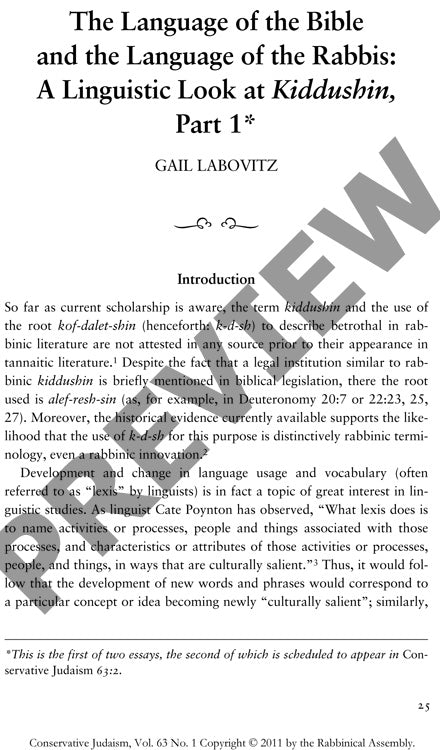The Language of the Bible and the Langua
Couldn't load pickup availability
The rabbinic adoption of *kiddushin* as the primary term for Jewish betrothal has long been interpreted as a shift away from viewing marriage as acquisition—but this widely-held scholarly assumption proves problematic under close examination. Through systematic analysis of tannaitic and amoraic texts using cognitive linguistics and metaphor theory, a more complex picture emerges: the term *kiddushin* operates not in opposition to, but within the conceptual framework of *kinyan* (acquisition). Comparative analysis of biblical and rabbinic terminology, examination of syntactic structures in marriage formulations, and investigation of parallel usage patterns reveals that rabbinic texts frequently employ *k-d-sh* and *k-n-h* synonymously. The terminology of *kiddushin* maintains the same gendered subject-object relationships inherent in acquisition language, while the concept of *kinyan* remains vital throughout rabbinic discourse rather than being displaced. Analysis of key texts including M Kiddushin 1:1 and related passages demonstrates that the semantic shift to *kiddushin* represents an overlay on the underlying ownership metaphor rather than a fundamental reconceptualization of marriage. These findings suggest that scholarly claims about the "sanctification" of marriage through this linguistic change require significant reexamination.

More Information
-
Physical Description
-
Publication Information
Published 2011
ISBN
-
Publication Credits
Gail Labovitz

